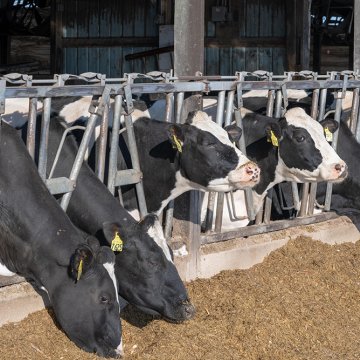At the recent World Dairy Expo, the Association of Equipment Manufacturers, National Milk Producers...
Fewer Dairy Farms - More Cows Per Farm

About 6% of U.S. dairy farms quit milking cows in 2022, but that was a slower rate of decline than in the past five years, according to the annual USDA Milk Production Report, which summarizes the previous year. The report was published on March 20.
Twenty years ago, there were 70,375 dairy herds in the U.S. In 2022, there were 27,932 herds, down from 29,842 in 2021, according to Greg Bussler, State Statistician for USDA's National Agricultural Statistics Service (NASS) Wisconsin field office. Calendar-year 2022 saw an exit of 1,910 dairy herds nationwide, or about 6% of the country's dairy operations. That compares to a loss of 1,794 herds nationwide, or 5.7% of the country's total, in 2021. But the decline in herd numbers in the three previous years was bigger: 2,535 (7.4%) in 2020; 3,281 (8.8%) in 2019; and 2,731 (6.8%) in 2018. Over the past 20 years, the U.S. has lost, on average, about 2,300 dairy herds per year.
Meanwhile, dairy cow numbers declined slightly; the average herd size is growing; and per-cow and total milk production have increased. Through 2022, the average number of milk cows in the nation's dairy herd shrank by 0.5% to 9.4 million head, or 100,000 fewer cows than in 2021, according to Bussler.
The average dairy herd size reached a record-high of 337 head in 2022. That number has grown steadily in the past 20 years, from 129 cows in 2003. The average dairy herd size in Wisconsin has jumped to 208 cows today, up from an average of 140 cows just five years ago.
Production per cow increased year-over-year by 138 pounds to an average of 24,067 pounds per head. Total milk production climbed 169 million pounds to a record total of 226.4 billion pounds in 2022.
To read entire report, Click Here
EDITOR’S TAKE:
Let’s sum this up – fewer dairy farms, but more cows per farm with more output per cow and overall record milk production. In other words, dairy operations are much larger and more efficient than ever before. However, dairy pricing has been an issue for several years. Dairy producers and their processing organizations, along with general farm organizations like Farm Bureau, have recently developed a proposal they will push in the upcoming Farm Bill legislation. This could help stabilize the number of dairy farms if passed by Congress. But don’t forget, dairy farmers use a lot of trucks and they do receive regular payments for their output. Put them high on your list of prospective customers!








